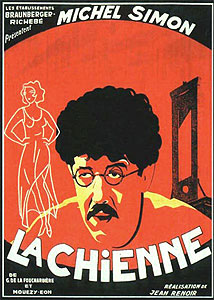A blog formerly known as Bookishness / By Charles Matthews
"Dazzled by so many and such marvelous inventions, the people of Macondo ... became indignant over the living images that the prosperous merchant Bruno Crespi projected in the theater with the lion-head ticket windows, for a character who had died and was buried in one film and for whose misfortune tears had been shed would reappear alive and transformed into an Arab in the next one. The audience, who had paid two cents apiece to share the difficulties of the actors, would not tolerate that outlandish fraud and they broke up the seats. The mayor, at the urging of Bruno Crespi, explained in a proclamation that the cinema was a machine of illusions that did not merit the emotional outbursts of the audience. With that discouraging explanation many ... decided not to return to the movies, considering that they already had too many troubles of their own to weep over the acted-out misfortunes of imaginary beings."--Gabriel García Márquez, One Hundred Years of Solitude
Saturday, January 28, 2017
La Chienne (Jean Renoir, 1931)
Seeing Michel Simon as the milquetoast Maurice Legrand in La Chienne after L'Atalante (Jean Vigo, 1934) and Boudu Saved From Drowning (Jean Renoir, 1932) is something of a revelation, even if at the end of La Chienne he has become something like Boudu. But the entire film is a revelation: The second sound film by Renoir, it demonstrates an innovative mastery of what was essentially a new medium, one that even the Americans who claimed to have invented synchronized sound were still struggling with. Renoir -- with the help of sound technicians Denise Batcheff and Marcel Courmes -- creates an auditory ambience still rare in 1931, relying on dialogue and sound effects created on set and not in post-production. The most often-cited example is the rasp of the paper knife held by Lulu (Janie Marèse) as she cuts the pages of the book she's trying to read -- just before Legrand kills her with it. But the film is full of small auditory details like the squeaking of the shoes worn by the defense attorney (Sylvain Itkine) as he paces nervously back and forth before his doomed client, Dédé (Georges Flamant). But beyond the technical mastery, which also includes some brilliant camerawork by cinematographer Theodor Sparkuhl, the film is a tour de force of bitter irony, not least because Renoir keeps it from falling into sensationalism or unrelieved darkness. Legrand, initially the henpecked husband to a termagant (Magdeleine Bérubet), brings calamity to several lives, not only those of Lulu and Dédé, but also those of his wife and her supposedly dead ex-husband (Roger Gaillard). And yet, at the film's end he survives, not only unbroken but in many ways a stronger man than he was at the film's beginning. His story is framed as a puppet show with, as a puppet claims, "no moral message." But though Legrand commits fraud, adultery, and murder without receiving the official punishment of the law, the moral is aimed at those who scorned and abused him: Beware the worm who may turn and prove to be a viper.
Links:
Denise Batcheff,
Georges Flamant,
Janie Marèse,
Jean Renoir,
La Chienne,
Magdeleine Bérubet,
Marcel Courmes,
Michel Simon,
Roger Gaillard,
Sylvain Itkine,
Theodor Sparkuhl
Subscribe to:
Posts (Atom)
